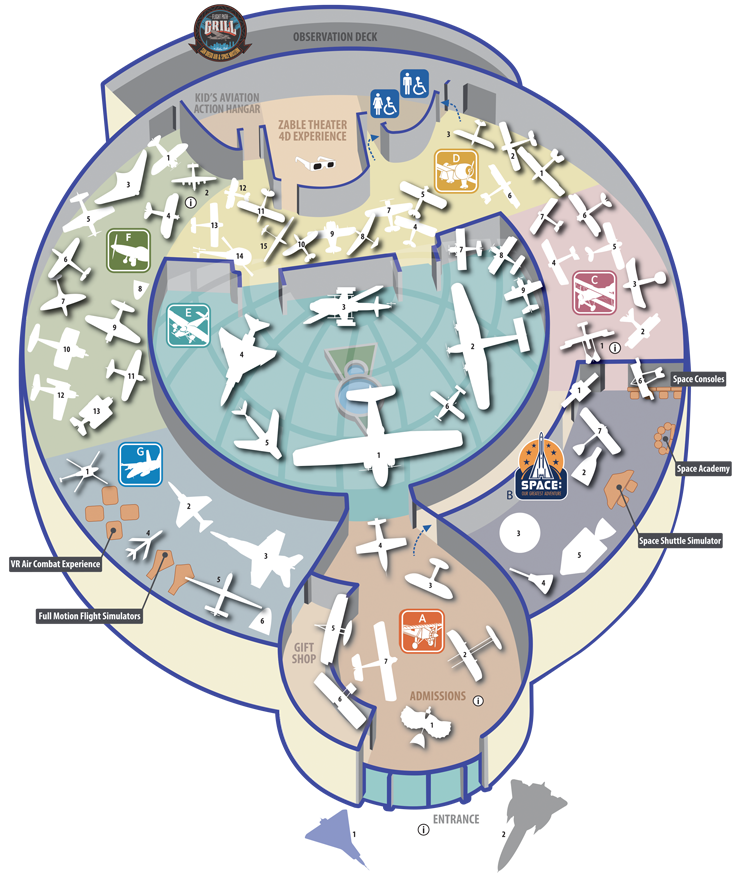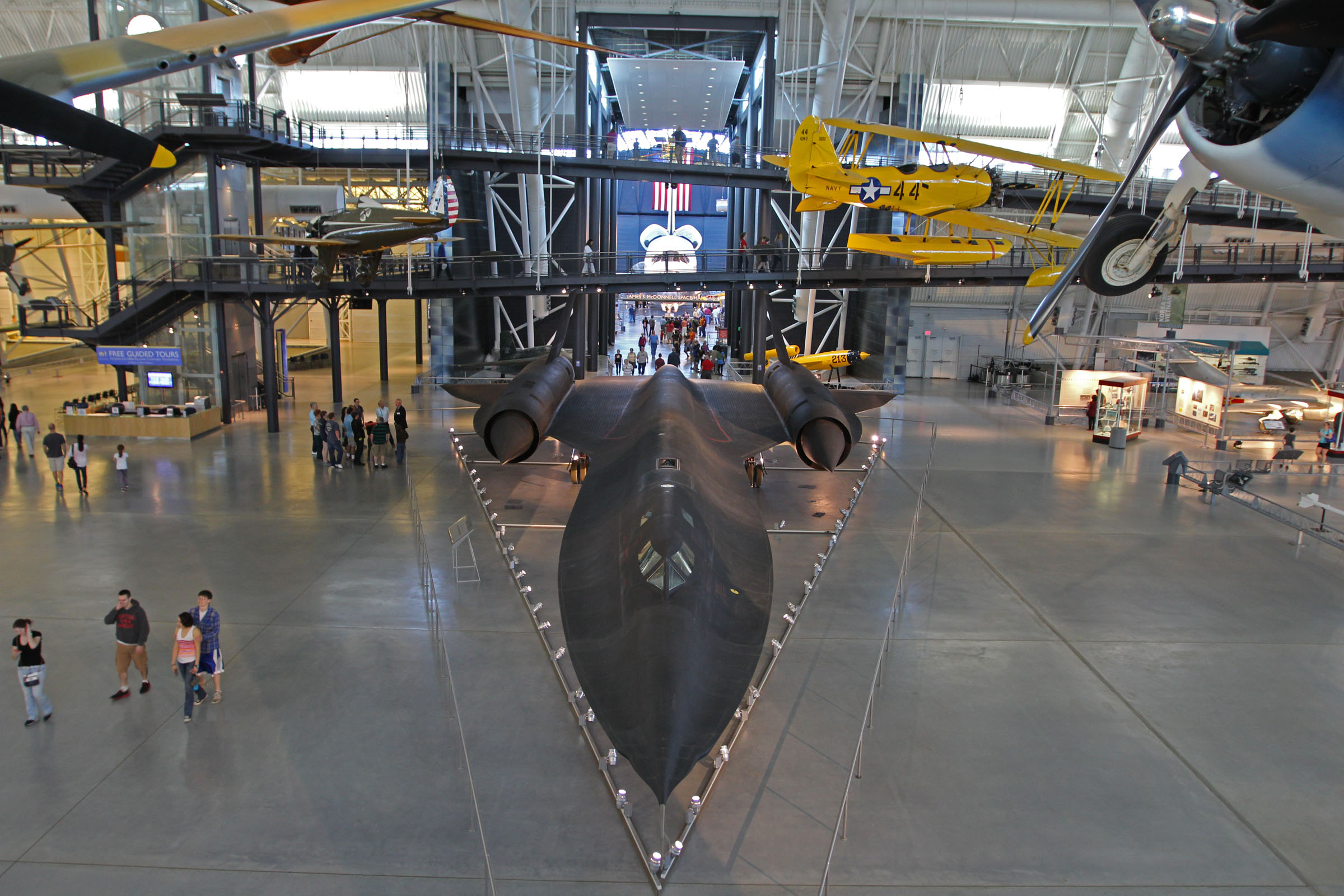The roar of a rocket engine, the sleek curves of a supersonic jet, the gentle sway of a hot air balloon – these are just a few of the sights and sounds that greet visitors to the Smithsonian National Air and Space Museum. It’s a place where the boundaries of imagination are pushed, and the wonders of human ingenuity are on full display. I remember my first visit as a child, awestruck by the sheer size of the Wright Flyer and the Apollo 11 Command Module. The museum ignited a passion for aviation and space exploration that has stayed with me ever since.

Image:
The Smithsonian National Air and Space Museum is not just a collection of artifacts; it’s a living testament to humanity’s drive to explore the unknown. It tells the story of our journey from the first tentative flights to the moon landing and beyond, showcasing the triumphs and setbacks that have shaped our understanding of the universe. The museum is a treasure trove of knowledge, inspiring visitors of all ages with its breathtaking exhibits and fascinating stories.
A History Steeped in Innovation
Early Beginnings
The Smithsonian National Air and Space Museum has its roots in the Smithsonian Institution, founded in 1846. The institution’s mission was to increase and diffuse knowledge, and this spirit of discovery laid the groundwork for the air and space museum. In the early 20th century, as aviation began to take off, the Smithsonian recognized the importance of preserving and showcasing these groundbreaking achievements.
A Dedicated Museum
In 1946, the Smithsonian established the National Air Museum, dedicated solely to the collection and exhibition of aircraft and related artifacts. This marked a significant turning point, establishing the museum as a dedicated repository for the history of flight. The museum grew rapidly, acquiring iconic aircraft like the Wright Flyer, Charles Lindbergh’s Spirit of St. Louis, and the Bell X-1, the first aircraft to break the sound barrier.

Image:
Reaching for the Stars
With the dawn of the space age, the museum’s scope expanded to encompass the exploration of outer space. In 1964, the National Air Museum was renamed the Smithsonian National Air and Space Museum, reflecting its broadened focus. The museum acquired historic spacecraft, including the Apollo 11 Command Module, the Gemini 7 capsule, and the Space Shuttle Discovery, showcasing the pinnacle of human achievement in space exploration.
Exploring the Vast Collections
The Smithsonian National Air and Space Museum boasts an awe-inspiring collection of over 230 aircraft, spacecraft, and related artifacts. These treasures tell the story of flight, from the earliest experiments to the latest technological advancements. Visitors can marvel at the Wright Flyer, the iconic aircraft that ushered in the age of powered flight. They can stand beneath the Space Shuttle Discovery, imagining the thrilling journeys it undertook.
One of the museum’s most popular exhibits is the “Apollo 11 Command Module,” where visitors can see firsthand the spacecraft that carried Neil Armstrong and Buzz Aldrin on their historic mission to the moon. Another highlight is the “Milestones of Flight,” which showcases the evolution of flight, from the earliest gliders to modern supersonic jets. This exhibit provides a comprehensive overview of the key innovations that have shaped the history of aviation.
A Museum for Everyone
The Smithsonian National Air and Space Museum is not just for aviation and space enthusiasts. It offers something for everyone, from kids to adults. The museum’s interactive exhibits, educational programs, and engaging presentations make learning fun and accessible. Visitors can participate in hands-on activities, explore the museum’s virtual reality experiences, or watch live demonstrations of flight.
The museum’s vast collection, coupled with its engaging exhibits and educational programs, make it a truly immersive experience. Whether you’re a history buff, a science geek, or simply curious about the world around you, the Smithsonian National Air and Space Museum has something to offer.
Latest Trends and Developments
The Smithsonian National Air and Space Museum is constantly evolving, adapting to the latest trends and developments in science and technology. One of the most significant developments in recent years is the focus on space exploration. With private companies like SpaceX and Blue Origin pushing the boundaries of space travel, the museum has incorporated these advancements into its exhibits and programs.
The museum has also been actively engaged in research and conservation efforts. Through its “Smithsonian Astrophysical Observatory,” the museum participates in cutting-edge research projects like the search for exoplanets. Furthermore, the museum is dedicated to preserving its precious collection for future generations, using innovative techniques to conserve and restore artifacts.
Tips for an Unforgettable Visit
Planning a visit to the Smithsonian National Air and Space Museum can be an exciting experience. To make the most of your trip, here are some insider tips:
- Plan Ahead: The museum is very popular, so it’s best to book your tickets in advance, especially during peak seasons.
- Choose Your Exhibits: With so much to see, it’s helpful to prioritize the exhibits that interest you most. Research the museum’s website and plan a route that allows you to see the highlights.
- Take Advantage of Educational Programs: The museum offers a wide range of educational programs, including guided tours, workshops, and lectures. These programs provide deeper insights into the exhibits and enhance your understanding of the museum’s collection.
- Explore the IMAX Theater: The museum’s IMAX theater offers immersive films about space exploration and aviation, providing a captivating visual experience.
- Enjoy the Outdoors: The museum is located near the National Mall, which offers beautiful views and ample opportunities for walking and exploring.
Expert Advice
For a truly unforgettable experience, I recommend visiting the museum on a weekday or early on a weekend morning. You’ll have more time to explore the exhibits without the crowds. And don’t forget to check out the museum’s events calendar. They often host special exhibitions, lectures, and workshops that can further enhance your experience.
Remember, the Smithsonian National Air and Space Museum is a treasure trove of knowledge and inspiration. Let your curiosity guide you as you wander through the exhibits, and don’t be afraid to ask questions. The museum’s staff is knowledgeable and passionate, and they’re always happy to share their expertise.
Frequently Asked Questions
Q: Is the Smithsonian National Air and Space Museum free to enter?
A: Yes, the museum is free to enter, thanks to the generous support of the Smithsonian Institution.
Q: How long should I spend at the museum?
A: A minimum of 3-4 hours is recommended to see the highlights, but you could easily spend an entire day exploring the museum.
Q: Is there parking available at the museum?
A: Limited parking is available on a first-come, first-served basis. However, it’s highly recommended to use public transportation or ride-sharing services.
Q: Are there any accessible restrooms and elevators in the museum?
A: Yes, the museum offers accessible restrooms and elevators throughout the building.
Smithsonian National Air And Space Museum
A Lasting Impression
The Smithsonian National Air and Space Museum is a testament to human ambition, innovation, and the enduring fascination with the cosmos. It’s a place where dreams take flight and where the impossible becomes possible. The museum offers a captivating journey through the history of aviation and space exploration, leaving a lasting impression on visitors of all ages. Whether you’re a seasoned space enthusiast or simply curious about the universe, be sure to add the Smithsonian National Air and Space Museum to your list of must-visit destinations.
Are you interested in learning more about the history of flight and space exploration? What are your favourite exhibits at the Smithsonian National Air and Space Museum?





